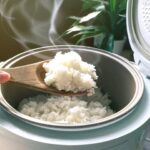Rice cookers are versatile appliances that can be used for cooking rice, porridge, stews, and even soups. They are a must-have in any household. When purchasing a rice cooker, people often focus on the size and design, neglecting the inner pot, which is the part that comes into the closest contact with the cooked rice.
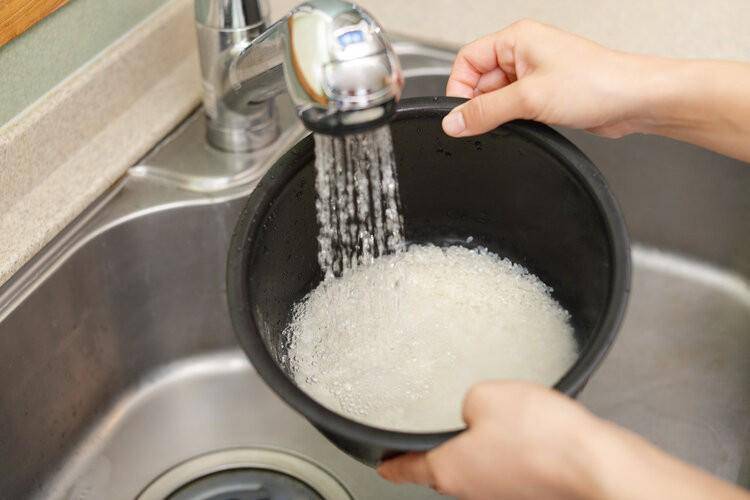
Inner pots of rice cookers in the market are typically made of aluminum alloy, enameled cast iron, anodized aluminum with a non-stick coating, anodized aluminum with a diamond non-stick coating, or multi-layered alloy with a non-stick coating. Aside from ceramic inner pots, other types are usually coated with a non-stick material, often Teflon, to ensure the rice cooker’s non-stick properties. However, this coating may start to peel off after 1-2 years of use. Some claim that using a rice cooker with a peeling coating can be carcinogenic. Is this true?
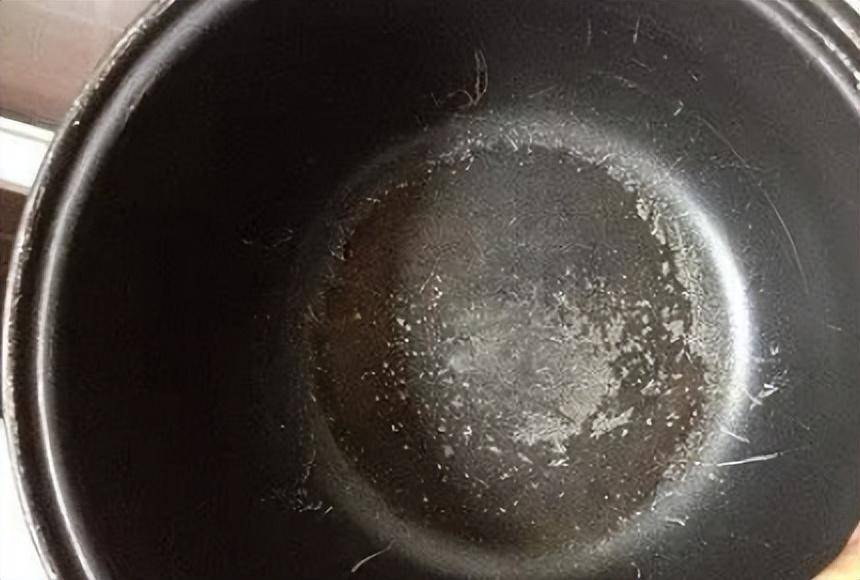
Genuine rice cookers use Teflon as the non-stick coating, and this substance only decomposes at high temperatures ranging from 300 to 400 degrees Celsius, while cooking temperatures never exceed 250 degrees Celsius, so there should be no change. Moreover, Teflon is difficult for the human body to absorb, and even if ingested, it is excreted, so readers can rest assured that even if they accidentally consume some of the non-stick coating, it will be excreted through the digestive system, without accumulating in the body or posing any health risks.
Can the pot be used continuously after the coating has peeled off?
Although the coating does not affect people’s health, once it peels off on a large scale, it will lead to uneven heating, causing the rice to stick and burn, affecting the taste and nutritional value of the food. The nutritional value of the food will also be compromised, and cleaning the inner pot will become more challenging.
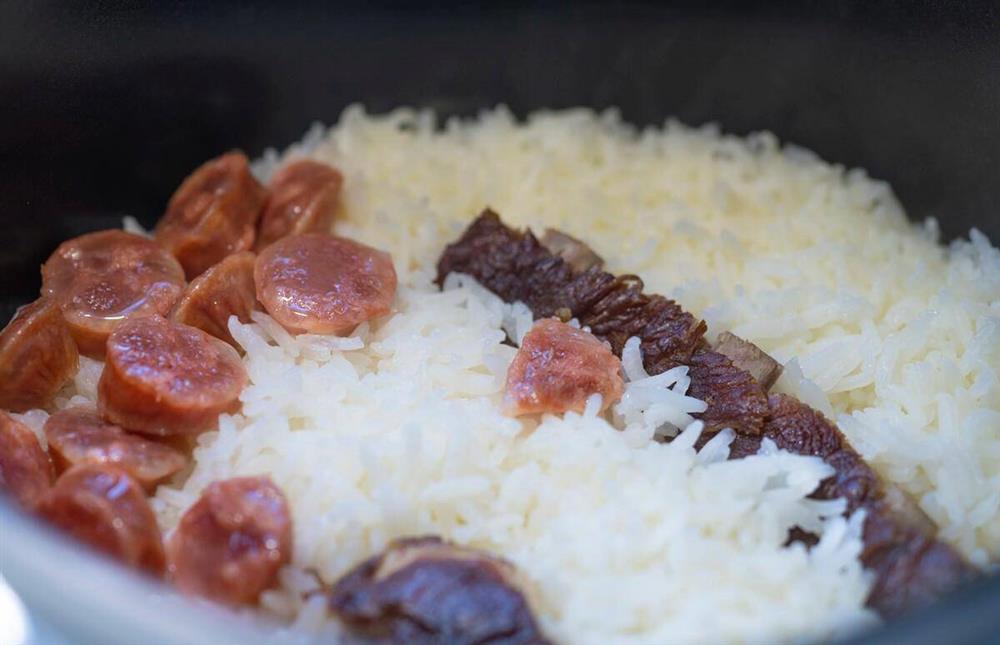
Secondly, if the non-stick coating is severely peeled off, exposing the aluminum base layer, it can be dangerous. Prolonged exposure to aluminum elements can be harmful to our health. Therefore, if the inner pot of your rice cooker at home has noticeable scratches or the coating has come off, it is best to stop using it immediately and replace the inner pot in a timely manner.
Simple and effective tips to prevent rice from sticking to the pot
Soak the rice in ice water for 15 minutes
Ice increases the amino acid content and inhibits the enzyme that breaks down the sweetness in rice. At the same time, the low temperature slows down the water absorption of the rice, resulting in more delicious and sticky cooked rice.
Add a teaspoon of vinegar when cooking rice
Vinegar will make the rice whiter and less sticky. Many people worry that vinegar will make the rice sour and unpalatable. However, vinegar easily evaporates when heated. Its smell will quickly disappear when the rice boils, ensuring soft and fragrant rice.
Use cooking oil, salad oil, or olive oil
This is a common trick to prevent rice from sticking to the pot. The Japanese also use this method to enhance the shine and elasticity of the cooked rice.
Cook rice with fresh milk at a ratio of 3:1
Fresh milk adds flavor to the rice. When the rice is cooked, the scent of milk blends subtly with the aroma of the rice, resulting in exceptionally soft and sticky rice. This is also one of the most effective ways to make old rice taste like new again.
How to properly clean and maintain a non-stick rice cooker
Many non-stick rice cookers lose their non-stick properties and become no different from regular pots after some time. This is often due to improper cleaning and maintenance practices by users.
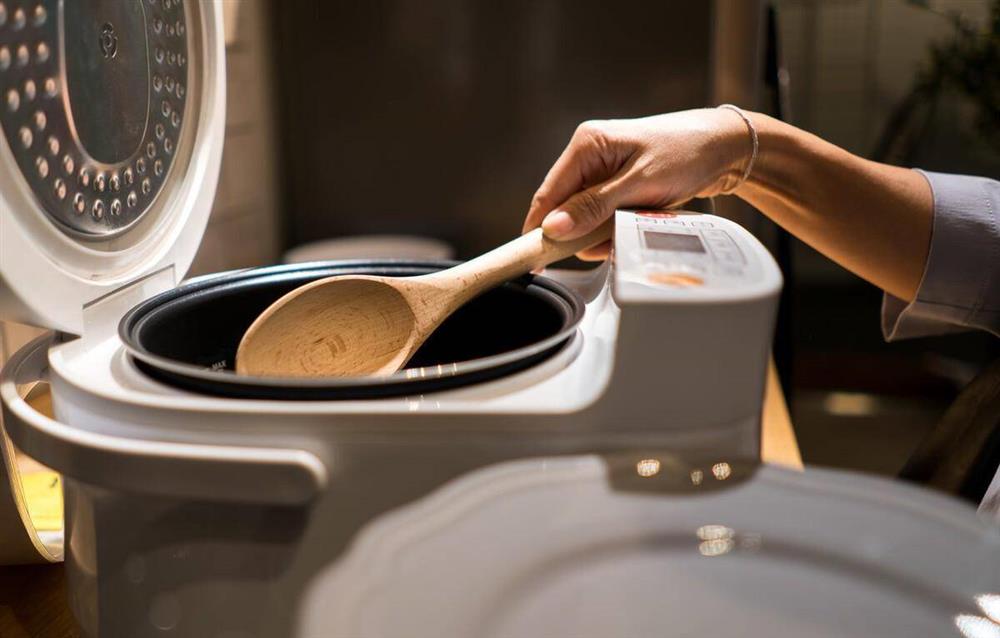
Users should be gentle and avoid using sharp, pointed, or hard objects to scrub the inner pot, as this can damage the non-stick coating. If the pot is already sticky, soak it in water for a while, then gently wipe it with a soft cloth or sponge. Additionally, avoid placing sharp objects such as bowls, plates, spoons, or knives in a way that they rub against the surface of the pot, as this can also damage the non-stick coating.
What to pay attention to when using a rice cooker
1. Ensure cleanliness between the inner pot and the heating plate
When using the rice cooker, make sure that there are no water droplets, grains of rice, or other debris between the inner pot and the heating plate. If there are any obstructions, it will not only hinder heat conduction, affecting cooking efficiency, but also increase the risk of damaging the rice cooker.
2. Do not use steel wool or abrasive cleaners
After food sticks to the inner pot, some people may be tempted to use steel wool or abrasive cleaners to scrub it off. However, these tools are too harsh and can damage the non-stick coating.
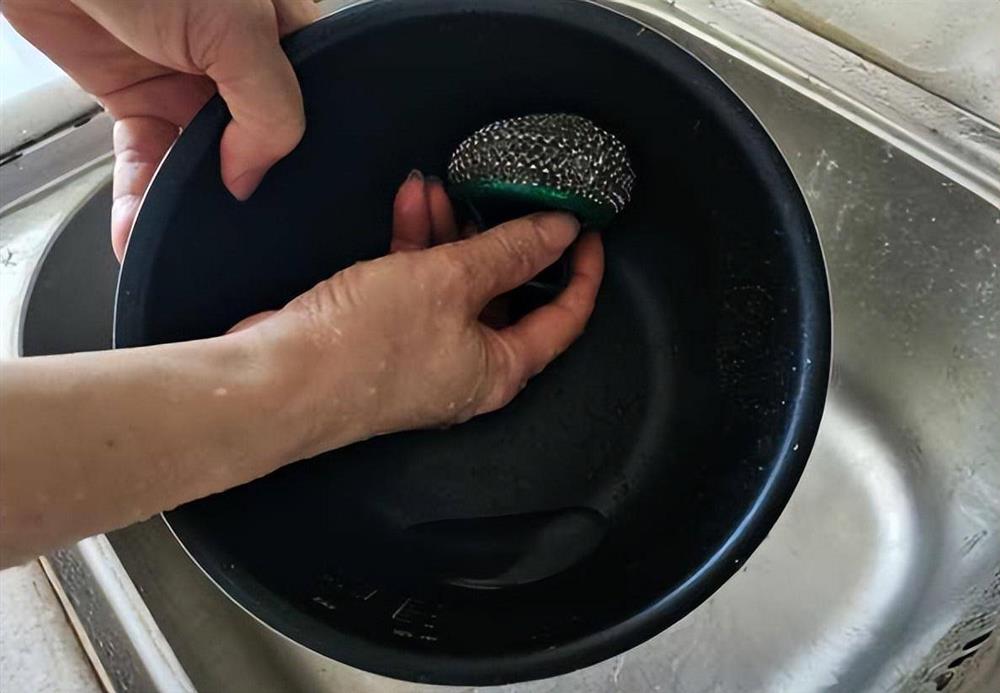
3. Do not place the inner pot directly on a flame or heating element
Direct exposure to high temperatures can cause the non-stick coating to break down and release harmful substances. It can also pose a safety risk to the electrical circuit.
4. Do not rinse the inner pot with cold water immediately after cooking
The inner pot of a rice cooker retains heat after use. If you rinse it with cold water, the coating is more likely to deform, and the rate of peeling will increase due to the expansion and contraction of the coating caused by the temperature change. Therefore, always let the inner pot cool down before cleaning it.
By An Nhien – Vietnamnet
The Magic of Three: A Guide to Saving on Your Electricity Bill
The rice cooker needs to be regularly cleaned and maintained; otherwise, it will become a dirty, smelly, and costly appliance. Over time, burnt rice and residue can build up, causing an unpleasant odor and even increasing your electricity bills. Regular cleaning is essential to keep your rice cooker in top condition and ensure your meals are always tasty and healthy.




























